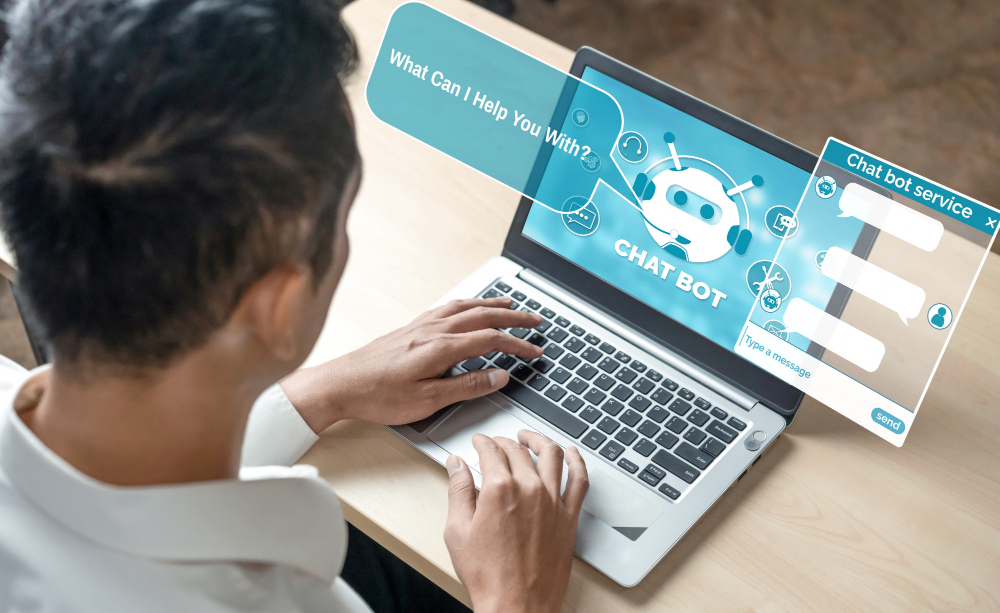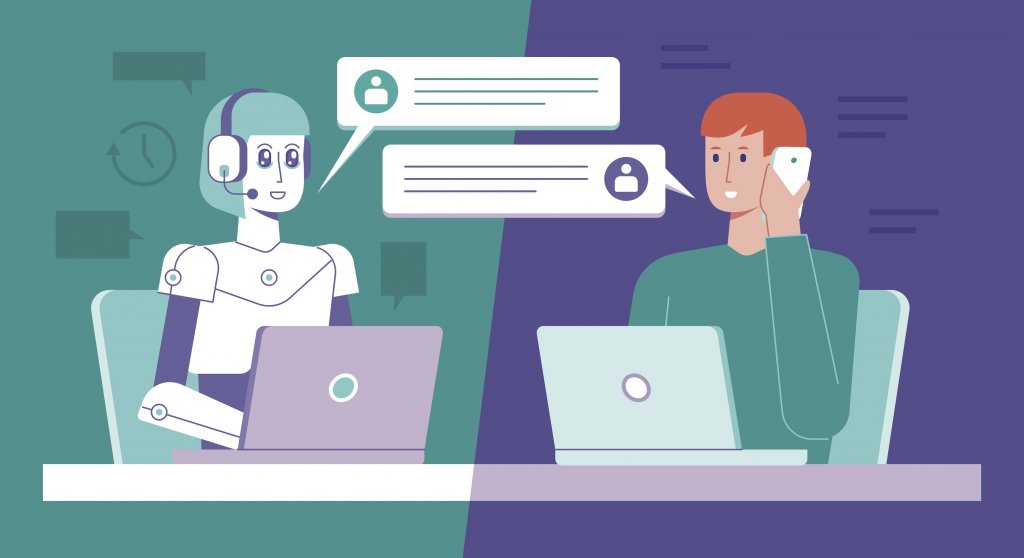A chatbot, also known as a chatterbot, bot, artificial agent, etc., is simply a piece of software that engages in text or voice communication with the user using artificial intelligence. The two most prevalent examples are Alexa and Siri.
These chatbots frequently do a certain activity for the user. A chatbot has a plethora of potential uses as artificial intelligence technology advances. They are capable of regularly managing tasks like form submissions, hotel reservations, transaction processing, etc. Hence, easing most of the workload without the need for a person.
Nowadays, chatbots do roughly 30% of the duties in any particular firm. Businesses employ this software to offer services like customer support, information distribution, etc. Deploying such tools to your business not only increases efficiency but plays a major role in increasing customer satisfaction as well.
How does a chatbot work?

Chatterbot makes conversational software development simple. When a user enters information into a chatbot, both the input and the user’s response are kept, enabling the chatbot to grow over time by learning from the replies it gets. For consumers in need of immediate assistance, this saves a tonne of time because the majority of their issues are resolved right away, thanks to this technology. One prime example of a company using this software to improve response times and rates is HughesNet customer service, which significantly raises the customer satisfaction rate by responding quickly to most of the customers’ queries.
The more replies there are, the more accurate the chatbot becomes. The computer selects the closest-matching answer from the statement that fits the input before picking the response from the known collection of statements.
Benefits of Using a Chatbot
Chatbots offer numerous advantages that can benefit businesses and consumers alike. By automating conversations, chatbots can save time and reduce costs associated with customer service operations. With a chatbot, customers can get the answers they need when they need them in an efficient manner. Additionally, with the rise of artificial intelligence (AI) technology, chatbots have become increasingly sophisticated and are able to provide higher quality services. Chatbots also allow businesses to personalize their interactions with customers and provide a more tailored service experience that is tailored to individual users’ unique preferences and needs.

Other key benefits of using a well-designed chatbot include:
- Increased customer satisfaction: Automatic customer service helps keep inquiries swift and accurate, allowing for faster resolution times for customers.
- Improved brand loyalty: By offering specialized services through conversational AI, businesses can provide more personalized customer engagement experiences that will help differentiate them from competitors and foster greater brand loyalty among customers.
- Collecting analytics data: With chatbot solutions like NLU (Natural Language Understanding), businesses are able to gather valuable insights on how their bots are performing over time which enables them to optimize their experiences accordingly.
- 24/7 availability: Using automation ensures your customer support will always be available – day or night – to assist in any required process or task quickly and efficiently whenever needed.
What makes a chatbot so special?
There are already almost a million chatbots accessible for every type of company. What, therefore, may set your chatbot apart from the competition? Here is our handy guide sheet for building AI chatbots, so you can make the most out of them. Ordinary chatbots typically fail because they become lost in the sea of competitors since there are so many of them in the market.
Being distinct is valued and desired at all times. As a result, it’s critical to build a top-notch chatbot to enhance client experiences and increase the value of your business.

Let’s take a look at the ultimate cheat sheet for building the best chatbots:
-
Identity
When creating a bot, naming it after your company should come first. You may give your chatbot a name, design warm welcomes, and inject some comedy into the conversation as you’re writing it. This will surely be the first step in making your chatbot cool and stand out from the competition since customers will be drawn to and engaged with it in this way.
-
Features
Features are the next item you can include in your chatbots to set them apart from other generic bots. You may take use of incredible features like conversational modeling, contextual talks, live chat, multilingualism, voice dialogues, extensive analytics, etc. Because of these features, your chatbot will become even more effective and unique.
-
Nodes
You may alter a chatbot you design for your company to match your needs by using different nodes. For example, “send message” enables your chatbot to engage with your customers, while “send a message with choices” allows you to add alternatives in your messages, such as “yes” or “no.” Different nodes are used for different functions. Additionally, you may send photographs, movies, and music to your customers in order to better engage them, as well as use the “send carousel” feature to send other links or drive them to your website.
-
Templates
There are many different themes you may use to build chatbots, and each sort of business needs a particular one. With the use of templates, you may create chatbots such as FAQ bots, travel chatbots that make bookings and schedule appointments, advice-giving chatbots that send broadcast messages, trip planners, etc. With the right use of themes, your chatbot may stand out from the competition and explain your goods or services to customers more clearly.
-
Integration
Integration is the process of choosing where to employ your chatbot. Your chatbot may be linked with a variety of platforms, including your website, WhatsApp, Facebook, Slack, Google Sheets, REST API, Kik, Google Calendar, Zapier, Json, and many others. You will be able to communicate with your consumers on a number of platforms and increase the value of your business by doing this.
To sum up
By using all of the aforementioned suggestions, you may creatively and individually create your chatbot. Make a bot that can serve a variety of purposes and identities to quickly draw in new consumers. This will surely help you to make the most of a chatbot’s benefits and will support the growth of your company.







